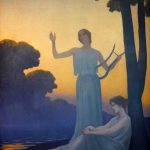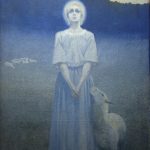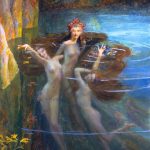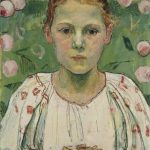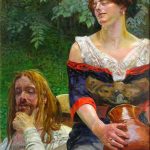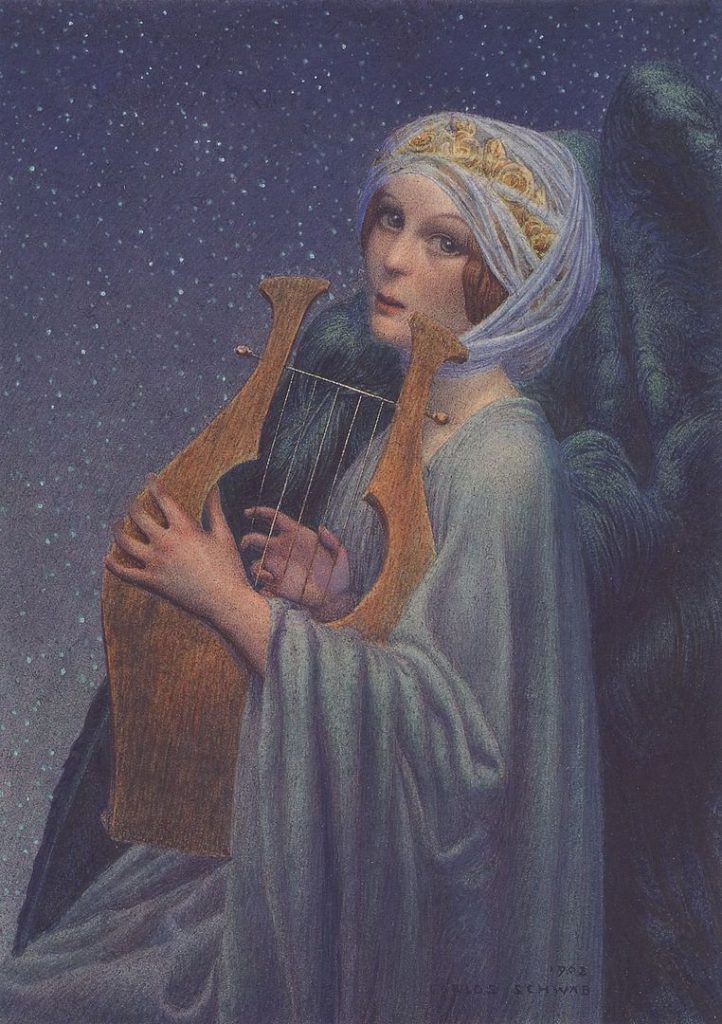
Carlos Schwabe, a Swiss symbolist painter and printmaker, stands as a luminary figure in the rich tapestry of the Symbolist movement that flourished during the late 19th and early 20th centuries. Born on July 21, 1866, in Altona, Hamburg, Schwabe’s life and artistic journey traversed the realms of mysticism, symbolism, and profound aesthetic exploration, leaving an indelible mark on the art world.
Early Years and Artistic Formation
Carlos Schwabe’s early years were marked by a convergence of cultural influences. Raised in Geneva, Switzerland, he was exposed to the city’s vibrant intellectual and artistic milieu. His precocious artistic talent prompted his parents to enroll him in the École des Beaux-Arts in Geneva at the age of 13, where he received formal training in the academic arts.
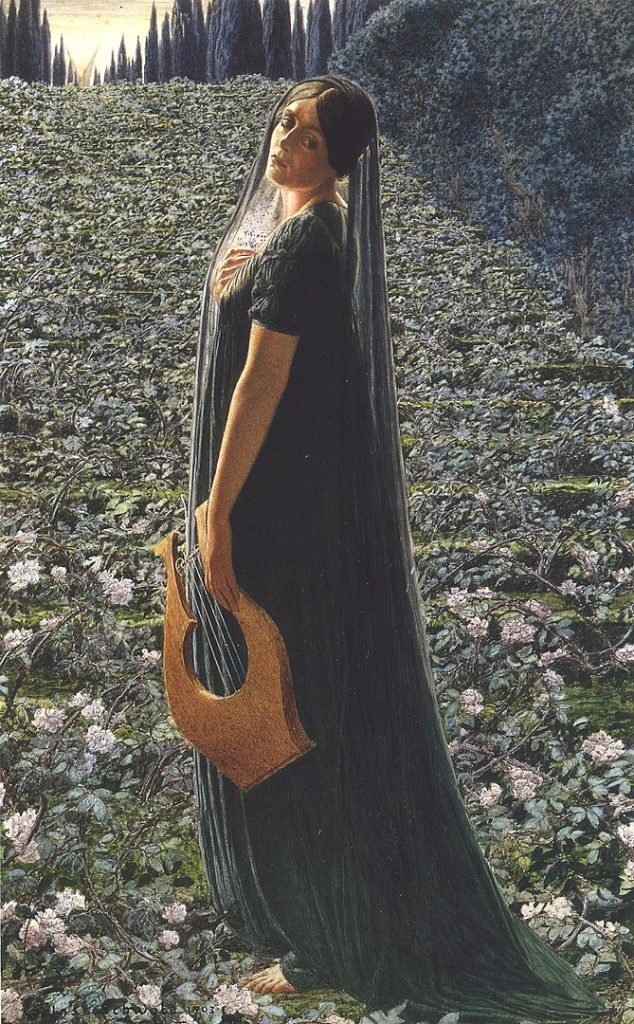
While Schwabe’s early studies adhered to academic conventions, his restless spirit sought new avenues of expression. In 1884, he moved to Paris, the epicenter of the burgeoning Symbolist movement. There, he immersed himself in the avant-garde circles, drawing inspiration from the Symbolist poets and artists who sought to convey profound, often mystical, ideas through their work.
Symbolism and the Parisian Scene
The Symbolist movement, with its emphasis on subjective expression, spirituality, and the evocation of emotions through symbolic imagery, resonated deeply with Schwabe. He found kindred spirits in the likes of Gustave Moreau and Odilon Redon, artists who were pushing the boundaries of artistic representation. Under their influence, Schwabe’s art underwent a profound transformation.
Schwabe’s work often delved into the realms of fantasy and allegory, mirroring the Symbolist preoccupation with the mysterious and the sublime. His early Symbolist masterpiece, “The Death of the Gravedigger” (1889), exemplified his departure from academic norms. The painting, a haunting portrayal of death and decay, introduced Schwabe as a Symbolist visionary with a penchant for the macabre.
Book Illustrations and Printmaking
Carlos Schwabe’s talents extended beyond canvas to the realm of book illustration and printmaking. He collaborated with prominent Symbolist writers, contributing illustrations to works by figures like Maurice Maeterlinck and Joséphin Péladan. This collaboration between visual and literary arts became a hallmark of the Symbolist movement, and Schwabe’s intricate, evocative illustrations brought an additional layer of depth to the texts.
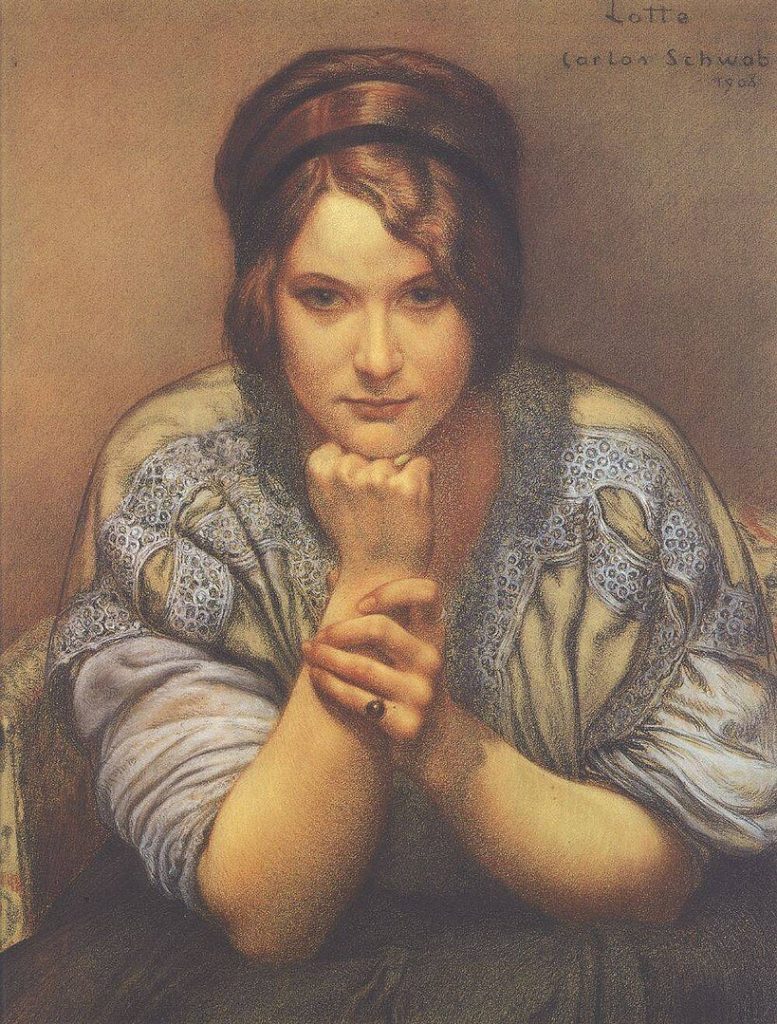
His skill in printmaking, particularly in the medium of lithography, further showcased his technical prowess. Schwabe’s prints, often characterized by their meticulous details and ethereal atmospheres, became highly sought after, earning him recognition as a master in the art of printmaking.
Mysticism and Spiritual Themes
Central to Schwabe’s artistic vision was a fascination with mysticism and spiritual themes. His works often explored the interplay between the physical and spiritual realms, depicting ethereal beings, mythical creatures, and scenes infused with symbolic significance. Schwabe’s art resonated with the broader cultural fascination with mysticism that pervaded the fin de siècle period.
“The Sphinx” (1896), one of Schwabe’s notable works, encapsulated the enigmatic allure of his oeuvre. The painting featured a woman’s figure with a Sphinx-like head, a recurring motif in Symbolist art that invoked a sense of mystery and ambiguity. Schwabe’s compositions invited viewers to contemplate the mysteries of existence and the transcendent nature of the human spirit.
Exhibitions and Recognition
Schwabe’s reputation continued to grow, and his works were featured in prominent exhibitions throughout Europe. His participation in the Salon de la Rose+Croix, an annual exhibition organized by Joséphin Péladan’s Rosicrucian movement, solidified his position within Symbolist circles. The salon provided a platform for artists who sought to infuse their work with esoteric and spiritual themes.

In addition to exhibiting in Paris, Schwabe’s art gained international acclaim through exhibitions in cities like Munich, Berlin, and Brussels. The Symbolist movement, with its emphasis on universal themes and emotions, resonated across borders, and Schwabe’s art found an appreciative audience beyond the French artistic scene.
Swiss Identity and Return to Geneva
Despite his integration into the Parisian art scene, Schwabe remained deeply connected to his Swiss roots. In 1900, he returned to Geneva, where he continued to produce art that reflected the merging of Symbolist ideals with a connection to his homeland. The Swiss landscape and folk traditions became a source of inspiration, offering a counterpoint to the mystical and fantastical themes prevalent in his earlier works.
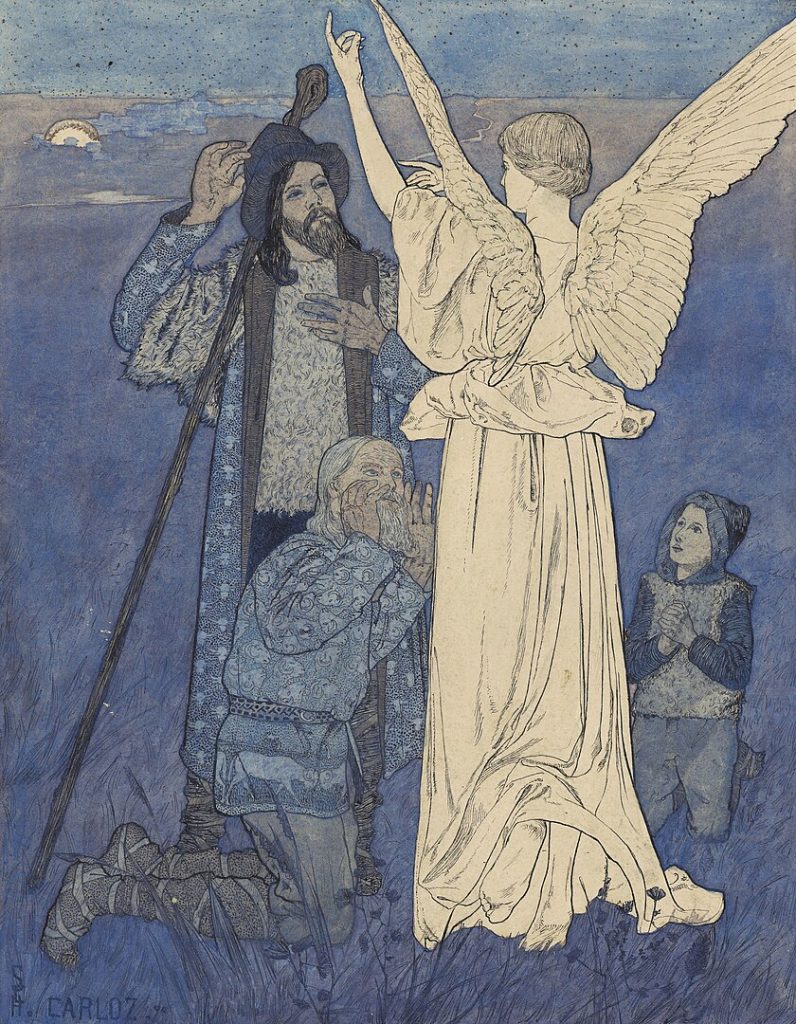
Schwabe’s return to Switzerland also marked a period of introspection and reassessment of his artistic principles. While he maintained his commitment to Symbolist ideals, his later works began to reflect a synthesis of Symbolism with elements of Art Nouveau, a burgeoning artistic movement characterized by organic forms and decorative aesthetics.
Legacy and Later Years
Carlos Schwabe’s influence extended beyond the fin de siècle period, impacting subsequent generations of artists. His exploration of symbolism and spiritual themes laid the groundwork for later movements such as Surrealism. The dreamlike quality and intricate symbolism of his art echoed in the works of artists

